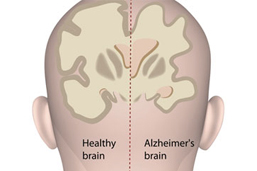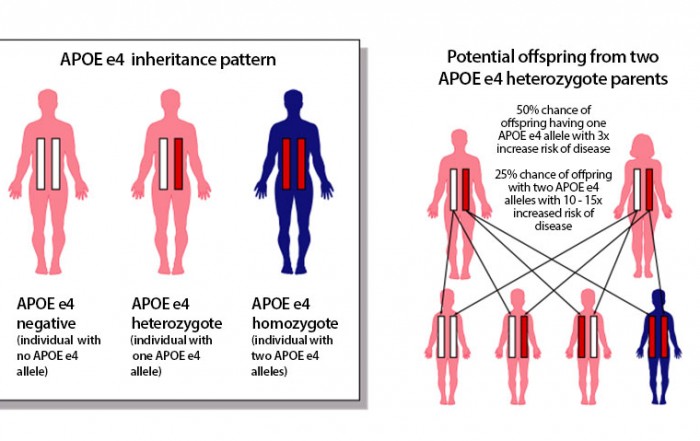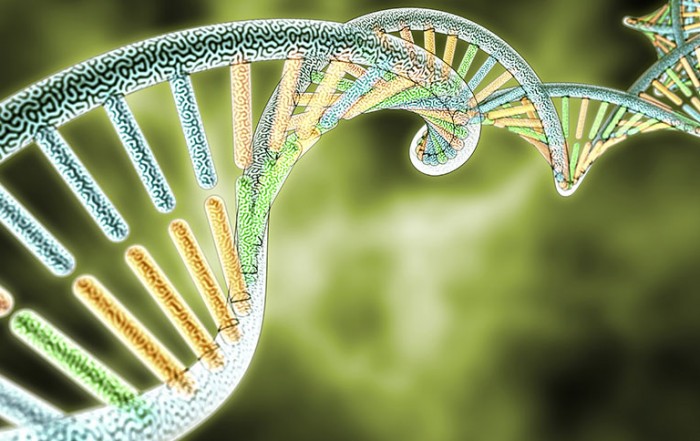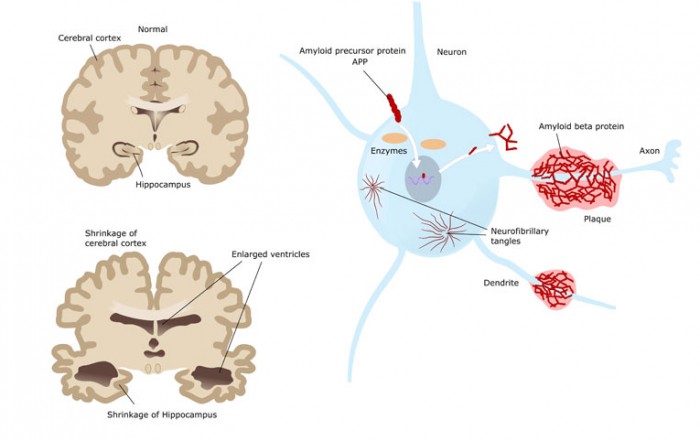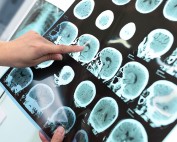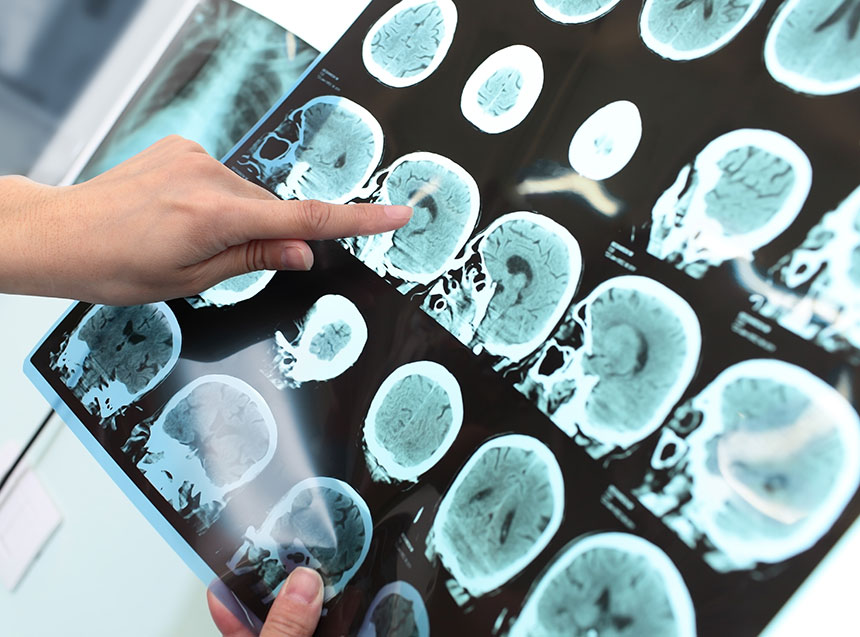Alzheimer’s Disease (APOE) DNA Test
Find out if you are at increased risk of Late-Onset Alzheimer’s Disease
- Alzheimer’s is a progressive debilitating disease characterized by memory loss in its early stages
- More than 5.4 million Americans have Alzheimer’s Disease
- The APOE e4 genetic type increases the lifetime risk of late-onset Alzheimer’s disease by 3- to 15-fold
- Find out if you are at increased risk. Simple mouth swab DNA test with results in 1 – 2 weeks
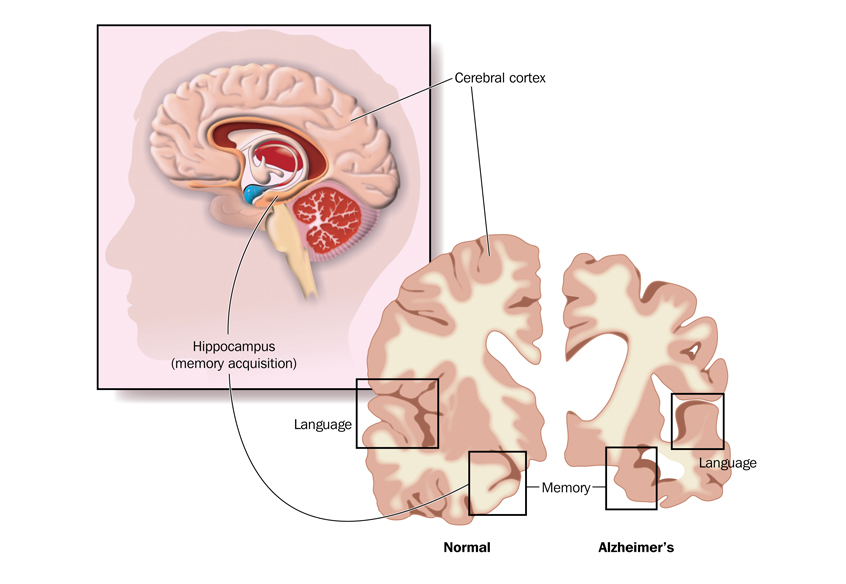
About the Alzheimer’s Disease APOE DNA Test
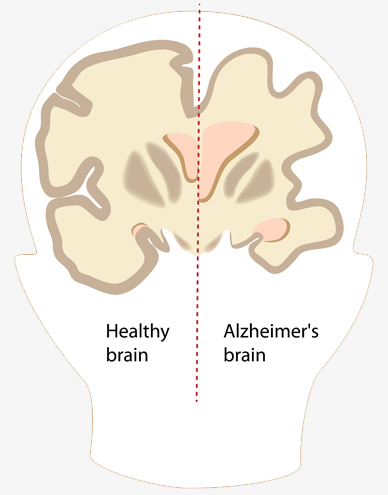
The gene most commonly associated with late-onset Alzheimer’s disease is called APOE. APOE encodes a protein called Apolipoprotein E, which is involved in injury repair and transporting fats between brain cells. There are three forms of APOE: APOE e2, APOE e3, and APOE e4. The forms APOE that a person carries directly affects their lifetime risk of developing late-onset Alzheimer’s Disease:
- APOE e2 — APOE e2 appears to be protective against Alzheimer’s and decreases a person’s lifetime risk of developing Alzheimer’s Disease.
- APOE e4 — APOE e4 is associated with an increased lifetime risk of developing late-onset Alzheimer’s Disease. Individuals with one copy of APOE e4 have three times the risk of developing late-onset Alzheimer’s, while those with two copies of APOE e4 have 10 – 15 times the risk.
- APOE e3 — APOE e3 is the most common allele and neither decreases or increases a person’s lifetime risk of Alzheimer’s disease.
How can I get tested?
Get the DNA kit online, by fax or by phone. Once you place the order, the testing kit will be shipped directly to you. The kit contains swabs called “buccal swabs”. DNA is collected quickly and easily by rubbing the swabs inside your mouth against the cheek for 30 seconds. Once the DNA is collected, the swabs are placed into the specimen container provided in the kit and returned to the laboratory for testing using the return package included in the testing kit. Once your samples arrive at the laboratory, testing begins immediately and results are available within 5 to 7 business days. Receive your final report by mail, email or online.
The 3 Major Stages of Alzheimer’s Disease
Early Stage (Mild)
Although the first symptoms of Alzheimer’s disease vary from person to person, the most common initial sign is memory loss. 10 of the most common early signs of Alzheimer’s disease are:
Mid Stage (Moderate)
As the brain damage progresses to areas affecting language, reasoning and conscious thought, the memory loss worsens and further problems occur:
- Trouble recognizing family and friends
- Inability to learn new things
- Distressed in new environments
- Hallucinations
- Agitation
- Delusions
- Paranoia
Advanced Stage (Severe)
By this stage, the plaques and tangles which have formed in the brain now affect the majority of the brain tissue and significant brain atrophy has occurred. Further symptoms of severe Alzheimer’s include:
- Inability to communicate
- Reliance on others for their everyday care
- Become bedridden
- The body shuts down
- Death usually results from general inanition, malnutrition and pneumonia
Alzheimer’s Disease DNA Testing Frequently Asked Questions
Getting Started
Alzheimer’s Disease Learning Center
How is the Alzheimer’s Disease APOE Gene Inherited?
The APOE gene linked to Late-Onset Alzheimer's disease is present on one of the autosomal chromosomes (chromosome 19). Each of us inherits one of each autosomal chromosome from each parent, and if we have children, [...]
The APOE Genetics of Alzheimer’s Disease
There are two general types of Alzheimer’s disease known as Early-Onset Familial Alzheimer’s and Late-Onset Alzheimer’s. Both diseases have similar symptoms and progression, but differ in the age of onset and the genetic cause. Early-Onset [...]
What brain changes occur in Alzheimer’s patients?
The human brain has three major components. The main part is the cerebrum surrounded by an outer layer known as the cerebral cortex. This part of the brain is required for remembering, problem solving, feeling [...]
Latest Alzheimer’s Disease News
Metabolic basis for changes leading to Alzheimer’s disease identified
Amyloid plaques and tau (or neurofibrillary tangles) are the typical pathological lesions present in the shrinking brains of patients affected by Alzheimer’s disease. These pathological changes [...]
Link discovered between exercise, healthy mitochondria and a healthy brain
Adequate exercise is essential to maintain not only a healthy body, but also a healthy mind. Physical exercise is beneficial for brain plasticity (the brain’s ability [...]
Marijuana identified as potential treatment for Alzheimer’s disease
Most people who suffer from Alzheimer’s disease are affected by neuropsychiatric symptoms, primarily depression, sleeping issues, apathy and verbal and physical agitation. As the disease progresses, [...]

